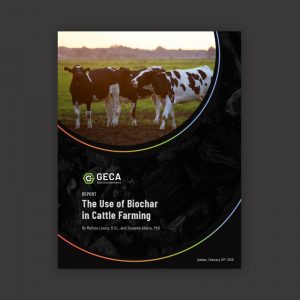Substrates Containing Biochar: Plant Growth, Economics & Carbon Sequestration
$0.00
Authors
Sébastien Lange & Suzanne Allaire
Report Abstract
In Quebec, reforestation relies mainly on the production of 150 million seedlings, of which more than 80% are container-grown spruces. Because the price of substrate components increases and the forest industry tends to use more environmentally-friendly production processes, biochar seems an interesting alternative as a replacement for peat and perlite. The objective of this study is to evaluate the performance of three biochars manufactured from various forest residues incorporated at different rates (6.2; 12 and 25% v/v) into substrates used to grow white spruces over a one-year period. Switching from peat and perlite to biochar, at a rate up to 25% v/v, did not change plant growth. All the seedlings grown in these new production substrates complied with the strict Quebec government standards. Biochars could replace 100% of the perlite and 25% of the peat total volumes. The economic analysis, which included the cost of substrate components, revealed that switching to biochar resulted in 25% financial benefit, if the analysis was conducted today (2018). The benefit is expected to rise over the years with the decreasing prices of biochar and increasing prices of other substrate components. If we consider only white spruce in a single nursery, a complete replacement of perlite by biochar could induce an equivalent C sequestration of 6.0 to 7.3 T yr-1.So, for white spruce production only, if the same biochar application rate was used in all the forest nurseries in Quebec, C sequestration could reach 285 to 714 T yr-1, which could represent a simple and fast way to sequester carbon. If all horticultural perlite used in Quebec was replaced by biochar, this could induce a C sequestration equivalent to 4,000 T yr-1. Thus, biochar could be used as a substrate component in forest nurseries offering environmental and economic benefits up to an application rate of at least 25 % v/v while producing the same high-quality seedlings. Higher biochar application rates should be tested. We expect from these tests important production and economic gains compared to the standard substrate currently used, provided that pH, irrigation and fertilization are adjusted to the properties of these new biochar substrates. This was not done in this study.
Available in PDF only.




